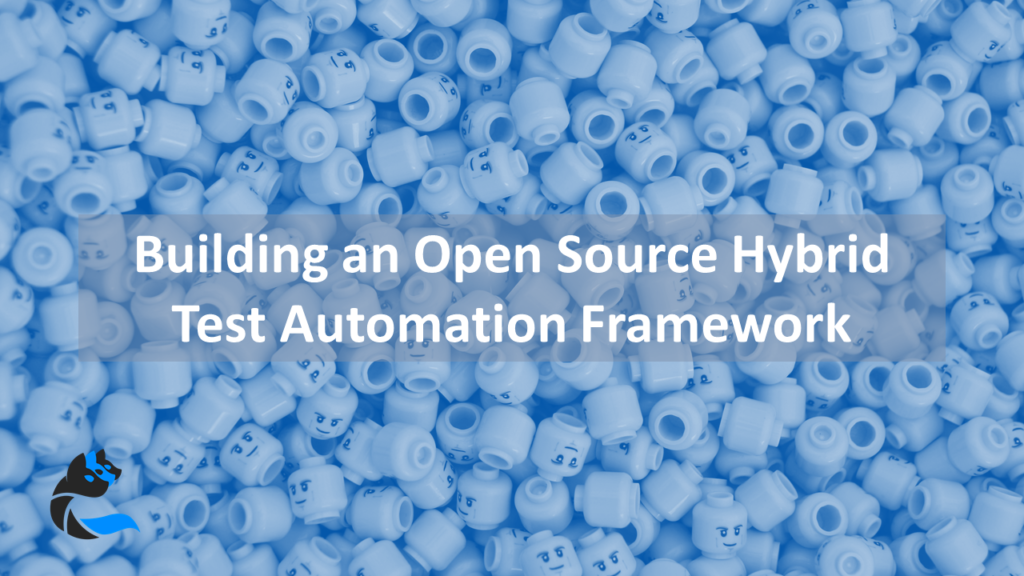Building an Open Source Hybrid Test Automation Framework

Are you trying to decide if you should build your own open source hybrid test automation framework?
This is a question many people in the industry ask themselves. Every organization has its own unique needs and challenges when it comes to test automation. As a result, many choose to build their own framework, customizing it to fit their specific requirements.
While this approach can be time-consuming, it offers a high degree of control and flexibility. However, a common pitfall is the tendency to reinvent the wheel, leading to unnecessary complexity and maintenance overhead.
By building on open source components, you can create a robust and adaptable hybrid framework that leverages existing, proven technologies. This article will guide you through the process of building an efficient and maintainable test automation framework using a hybrid approach.
The Problem: Why Another Framework?
A recurring issue in the industry is the constant need to develop new test automation solutions. Many teams, despite using well-known test automation tools, end up creating bespoke frameworks to solve problems that have already been addressed by others.
This leads to a fragmented ecosystem where knowledge and code are not easily shared. To counteract this, we propose a hybrid framework model that combines the best of multiple worlds, including data-driven, keyword-driven, and modular approaches.
This solution is designed to be easily accessible and maintainable for your entire team.
Key Principles of Our Hybrid Framework
To address the common challenges in test automation, our hybrid framework is built on four core principles:
- Simplicity: It must be simple to set up and use. A low barrier to entry ensures that everyone on the team, from junior testers to experienced developers, can contribute.
- Scalability: The framework must be able to support a large number of test cases and a variety of applications without performance degradation. This is crucial for large-scale regression testing.
- Maintainability: Code maintenance is often a challenge in test automation. Our design emphasizes clean, modular code that is easy to update and modify. This principle is directly addressed by the keyword-driven and data-driven aspects of the hybrid framework.
- Openness: Leveraging an open-source model allows for collaboration, peer review, and continuous improvement. This is the cornerstone of our approach to building a robust test automation framework.
Leveraging the Power of Selenium
When it comes to web test automation, Selenium is the dominant player. Its open-source nature and robust community make it the ideal foundation for our framework. The Selenium WebDriver is used as the core driver script to interact with various browsers. This provides a powerful and flexible way to execute test cases. We have integrated Selenium with other tools to create a comprehensive solution.
Structuring the Test Framework
Our proposed hybrid framework has a modular structure, with each component handling a specific task. This approach improves code maintenance and reusability.
- Test Script: The test script is the core of your test automation. It contains the steps to execute a test case. In our hybrid framework, this is often abstracted from the underlying code.
- Test Case: A test case is a set of actions that a tester can perform to test a feature or functionality. It is the fundamental building block of test automation.
- Object Repository: This is a centralized location for storing web elements. Instead of hardcoding locators in your test script, you can store them in the object repository. This is one of the key advantages of a hybrid framework as it makes it significantly easier to manage and update locators if the application’s UI changes.
- Driver Script: The driver script is the brain of the framework. It reads data from external sources and decides which test cases to execute.
- Test Data: All the data used in the test cases is stored in external files, such as CSV or Excel sheets. This allows you to run the same test case with different data, a core feature of a data-driven approach.
Building with Open Source
A truly open source test automation framework has many advantages. It allows for collaborative development and provides a transparent environment for everyone to contribute. This approach accelerates innovation and ensures the framework remains relevant and effective.
To begin, you will need to choose a programming language and a set of tools. We recommend using Java with TestNG as the testng framework provides powerful features for test execution, reporting, and parallel testing. The selenium WebDriver is the core library for browser automation. You can also integrate tools like Maven for dependency management and Jenkins for continuous integration.
For mobile test automation, the framework can be extended to include Appium. This allows you to use the same principles to automate tests on both web and mobile platforms. The hybrid framework is highly adaptable and can be tailored to various platforms and technologies.
The Future of Test Automation
As technology evolves, so too must our approach to test automation. The advantages of a hybrid framework are clear: it is a flexible, maintainable, and scalable solution that can adapt to new challenges.
By leveraging open source tools and a community-driven approach, we can build better, more efficient test automation frameworks that benefit everyone in the industry.
Join the Cerberus Testing community for free now.